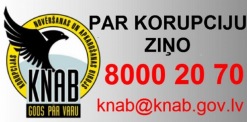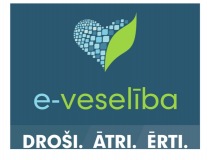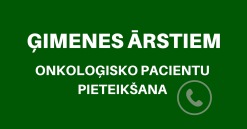Baiba Niedre-Otomere, Ance Bogdanova, Dace Skrastina, Anna Zajakina, Ruta Bruvere, Velta Ose,Wolfram H. Gerlich, Henrik Garoff, Paul Pumpens, Dieter Glebe, Tatjana Kozlovska. Recombinant Semliki Forest virus vectors encoding hepatitis B virus small surface and preS1 antigens induce broadly reactive neutralizing antibodies. Journal of Viral Hepatitis (accepted)
Kopsavilkums
Most hepatitis B virus (HBV) vaccines consist of viral small surface (S) protein subtype adw2 expressed in yeast cells. In spite of good efficacy, HBV genotype and subtype differences, escape mutants, and insufficient Th1 activation, remain potential problems. To address these problems, we generated recombinant Semliki Forest virus (rSFV) vectors encoding S protein, subtype adw2 or ayw2, or a fragment of the large surface protein, amino acids 1-48 of the preS1 domain, fused to S (preS1.1-48/S). The antigen loop in S protein and the selected preS1 sequences are known targets of neutralizing antibodies. BALB/c mice were immunized intravenously with 107 rSFV particles and 108 rSFV particles three weeks later. Antibodies induced by rSFV encoding S proteins reacted preferentially with subtype determinants of yeast-derived S antigen but equally well with patient-derived S antigen. Immunization with rSFV encoding preS1.1-48/S resulted in formation of preS1- and S-specific immunoglobulin G (IgG), while immunization with the isogenic mutant without S start codon induced preS1 antibodies only. Neutralizing antibodies were determined by mixing with plasma-derived HBV/ayw2 and subsequent inoculation of susceptible primary hepatocyte cultures from Tupaia belangeri. S/adw2 antisera neutralized HBV/ayw2 as effectively as antisera raised with S/ayw2. The preS1 antibodies also completely neutralized HBV infectivity. The IgG1/IgG2a ratios ranged from 0.28 to 0.88 in the four immunized groups and were lowest for the preS1.1-48/S vector indicating the strongest Th1 response. This vector type may induce subtype-independent and S-escape-resistant neutralizing antibodies against HBV.
Vladimirs Hutornojs, Tatjana Kozlovska, Anna Zajakina. A comparison of ultracentrifugation methods for the concentration of recombinant alphaviruses on iodixanol and sucrose cushions. Biological Procedures Online (submitted)
Kopsavilkums
Alphavirus vectors have been successfully used as gene delivery systems in animal models. A prerequisite for the efficient heterologous expression of genes is the application of high doses of recombinant viruses. Currently available methods for viral concentration are laborious and costly and often require specialized equipment. Here, we provide a comparative study of three methods used for alphavirus concentration: (i) Use of a 20 % sucrose cushion for direct virus pelletization, (ii) use of a double (20 and 50 %) sucrose cushion and ultracentrifugation, and (iii) use of a double (20 and 50 %) iodixanol cushion and ultracentrifugation.
The yield of concentrated recombinant Semliki Forest virus (SFV1/EGFP) from each method was evaluated by analysis of the viral infectivity and genome copy number as quantified using real-time PCR. The best results were obtained using a double iodixanol cushion and ultracentrifugation, a method that generated a high recovery yield (approximately 40 %) and a four-fold increase in virus concentration.
Alphaviruses can be rapidly concentrated using ultracentrifugation with a double iodixanol cushion, a method that results in a four-fold increase in the virus titer. Iodixanol-containing virus preparations can be used directly for in vivo applications because iodixanol is a non-toxic isosmotic solution that does not affect alphavirus infectivity.
Briede J, Stivrina M, Stoldere Dz, Vigante B, Dabina I, Duburs G. Effect of 1,4-dihydropyridine derivative cerebrocrast on glucose and lipid metabolism in normal rats after triple administration of compound. Trends in Cell and Molecular Biology (submitted)
Kopsavilkums
We examined the effect of 1,4-dihydropyridine derivative cerebrocrast on the changes of glucose and lipid profiles in the blood, glycogen, triacylglycerol, cholesterol levels in the kidney, heart, liver; fatty acids oxidation in the liver mitochondria, ketone body production, as well as body, kidney, heart, liver weight of normal rats after triple administration of compound.
Cerebrocrast administration at doses of 0.05 and 0.5 mg kg-1 body weight (p.o) significantly increased glycogen content in the liver, decreased blood glucose and glycogen level in the kidney and heart. It partially inhibited fatty acid oxidation in the liver mitochondria, and therefore favoured glucose oxidation and prevented the accumulation of lactate in the cells. Cerebrocrast promoted lipolysis, thereby providing energy for tissues and cells, and possibly decreasing body weight. Cerebrocrast decreased blood levels of hydroxybutyrate, and evidently it may be used as an energy source in the brain. By administering cerebrocrast, an increase in liver, kidney, and heart mass was not observed. Cerebrocrast provoked an increase in cholesterol in the liver and heart that can be used for plasma membrane formation at cells differentiation and proliferation, as well as for synthesis of steroid hormones in the adrenal gland.


